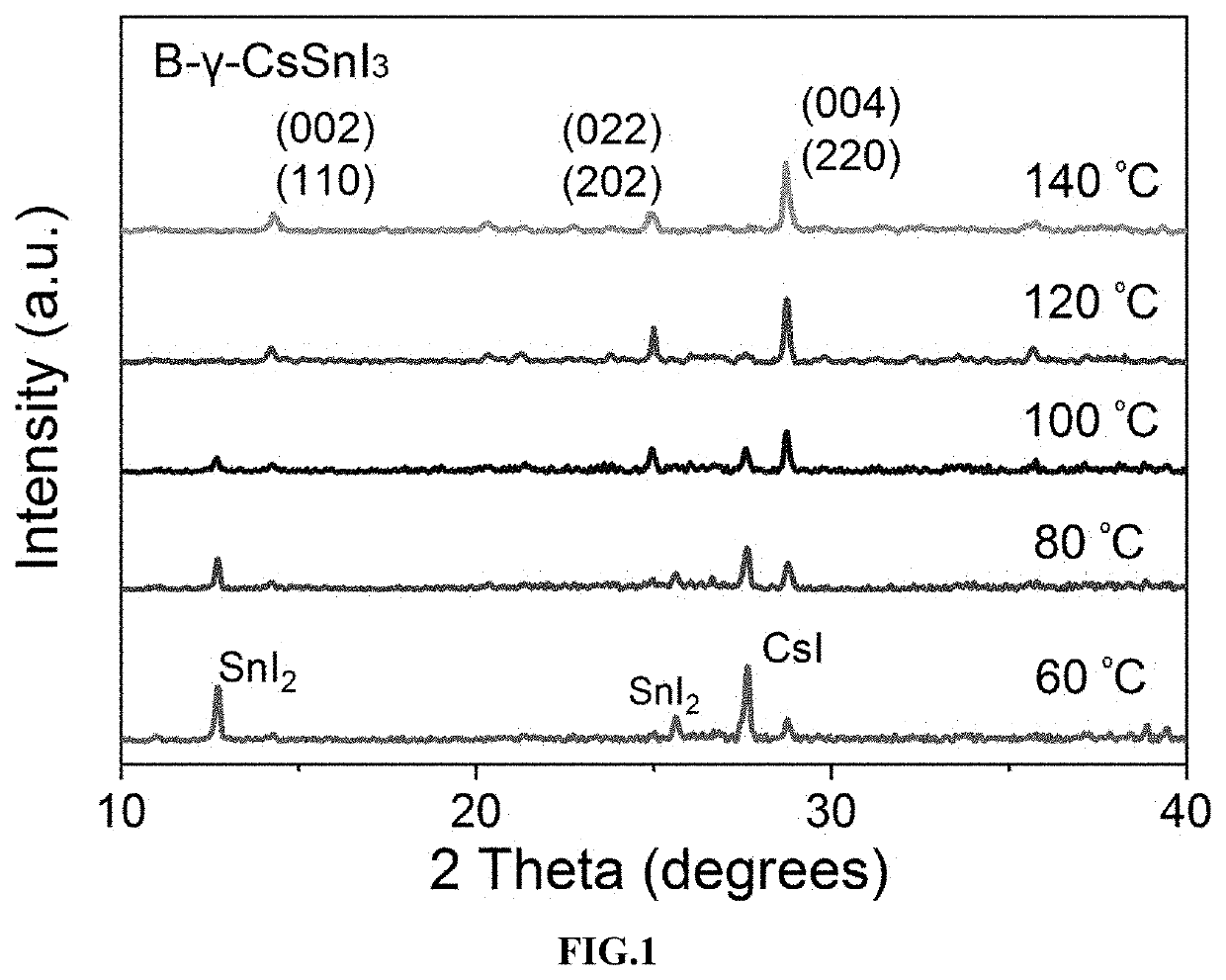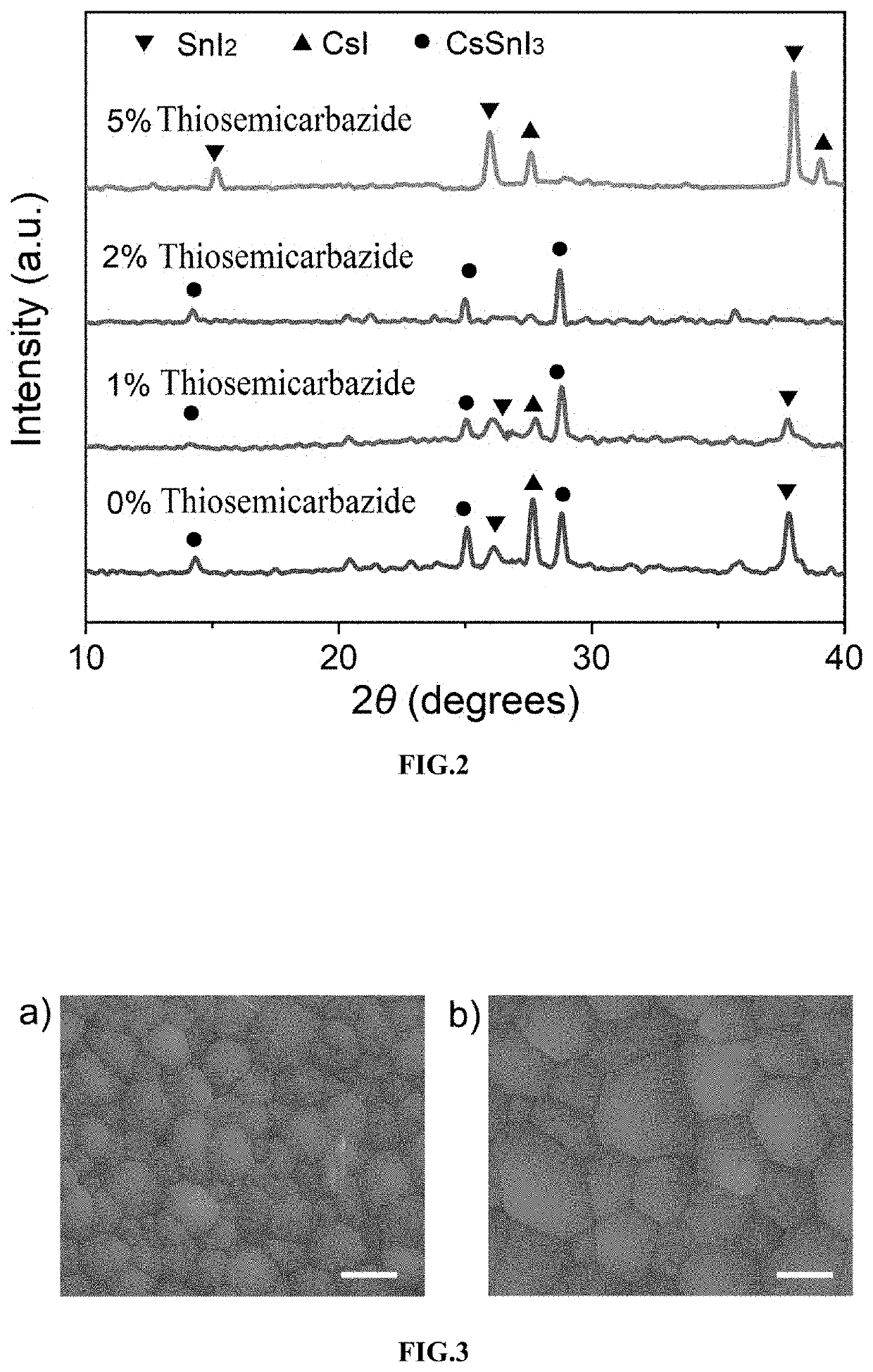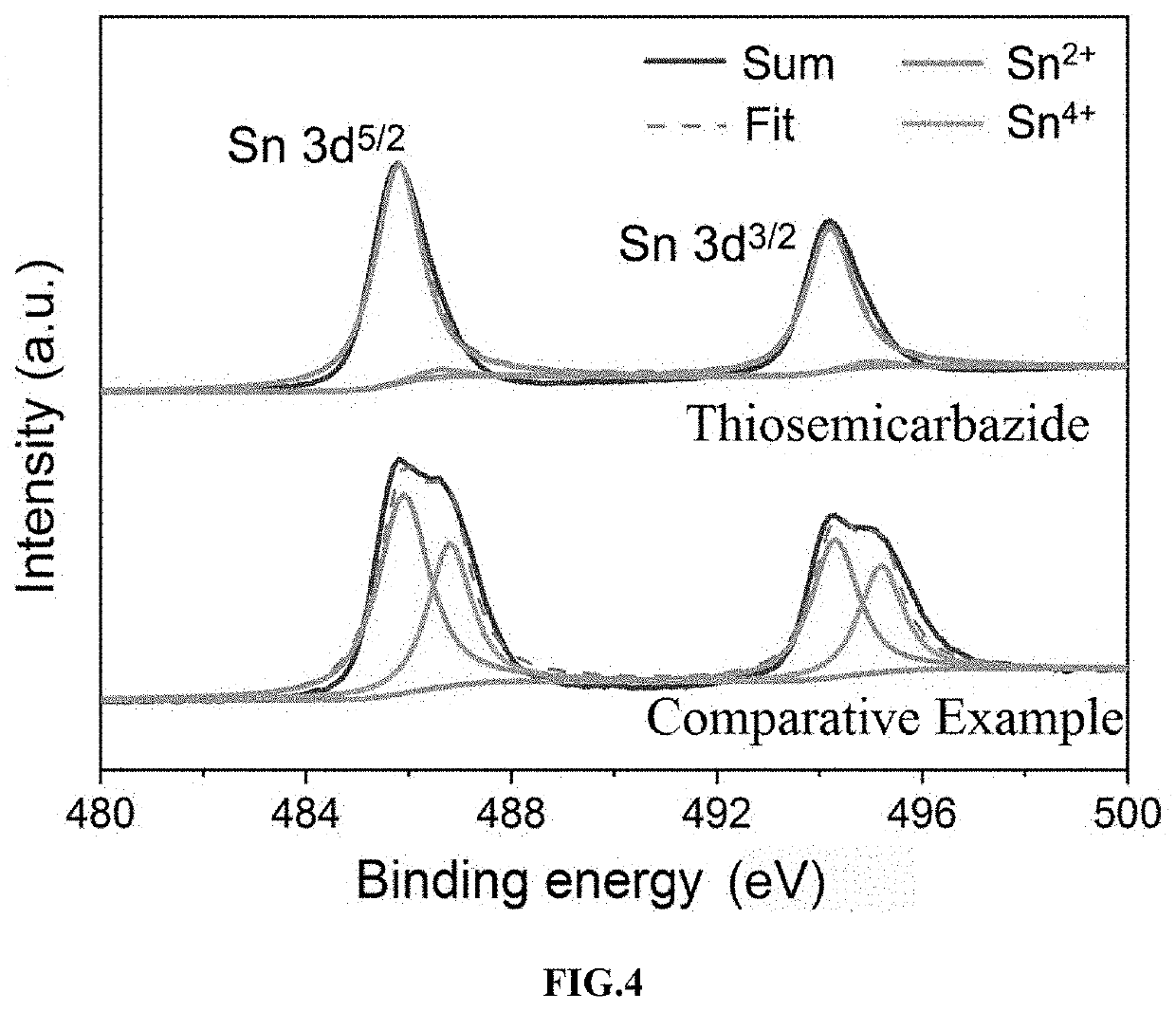Efficient And Stable Inorganic Lead-Free Perovskite Solar Cell And Method For Preparing The Same
- Summary
- Abstract
- Description
- Claims
- Application Information
AI Technical Summary
Benefits of technology
Problems solved by technology
Method used
Image
Examples
example 1
[0053]A method for preparing an efficient and stable inorganic lead-free perovskite solar cell is conducted as follows:
[0054](1) A conductive surface of an ITO conductive glass was partially etched by an etching process as follows: a dilute hydrochloric acid with a concentration of 2 mol / L was added to a surface of the ITO glass with a half of the surface covered with zinc powder at ambient temperature, and then reacted for 5 min; after that, the etching was completed. Then, the partially etched ITO glass was ultrasonically cleaned in a cleaning agent, acetone and ethanol in sequence at ambient temperature, 20 min for each cleaning material. The cleaned ITO glass was dried, and then placed in an ultraviolet-ozone processor and treated at ambient temperature for 30 min, obtaining an ITO conductive glass substrate with a thickness of 150 nm.
[0055](2) 100 μL of PEDOT: PSS conductive coating (with a concentration of 1.3-1.7%) was spin-coated on the ITO conductive glass substrate by a sp...
example 2
[0063]A method for preparing an efficient and stable inorganic lead-free perovskite solar cell was conducted as described in Example 1, except that:
[0064]The metal counter electrode layer was an Au layer, which was prepared by a process as follows: under a pressure of lower than 1×10−5 Pa, Au was evaporated at an evaporation rate of 0.5 nm / s and deposited on the BCP layer, obtaining the Au counter electrode layer with a thickness of 50 nm.
example 3
[0065]A method for preparing an efficient and stable inorganic lead-free perovskite solar cell was conducted as described in Example 1, except that:
[0066]In step (3), thiosemicarbazide was replaced with thiourea; the inorganic lead-free CsSnI3 perovskite layer was prepared by a process as follows: three precursors, i.e. 1.2 mmol of SnI2 (with a purity of 99.99%), 0.02 mmol of thiourea, and 1 mmol of CsI (with a purity of 99.9%), were respectively placed in three evaporation chambers of a vacuum thermal evaporation equipment, and under a vacuum degree of less than 1×10−5 Pa, SnI2 was firstly evaporated at a heating temperature of 350° C. and an evaporation rate of 0.2 nm / s until SnI2 was exhausted, thiourea was then evaporated at a heating temperature of 100° C. and an evaporation rate of 0.2 nm / s until thiourea was exhausted, and finally, CsI was evaporated at a heating temperature of 600° C. and an evaporation rate of 0.5 nm / s until CsI was exhausted. The deposited product was tran...
PUM
| Property | Measurement | Unit |
|---|---|---|
| Temperature | aaaaa | aaaaa |
| Temperature | aaaaa | aaaaa |
| Fraction | aaaaa | aaaaa |
Abstract
Description
Claims
Application Information
 Login to View More
Login to View More - R&D Engineer
- R&D Manager
- IP Professional
- Industry Leading Data Capabilities
- Powerful AI technology
- Patent DNA Extraction
Browse by: Latest US Patents, China's latest patents, Technical Efficacy Thesaurus, Application Domain, Technology Topic, Popular Technical Reports.
© 2024 PatSnap. All rights reserved.Legal|Privacy policy|Modern Slavery Act Transparency Statement|Sitemap|About US| Contact US: help@patsnap.com










